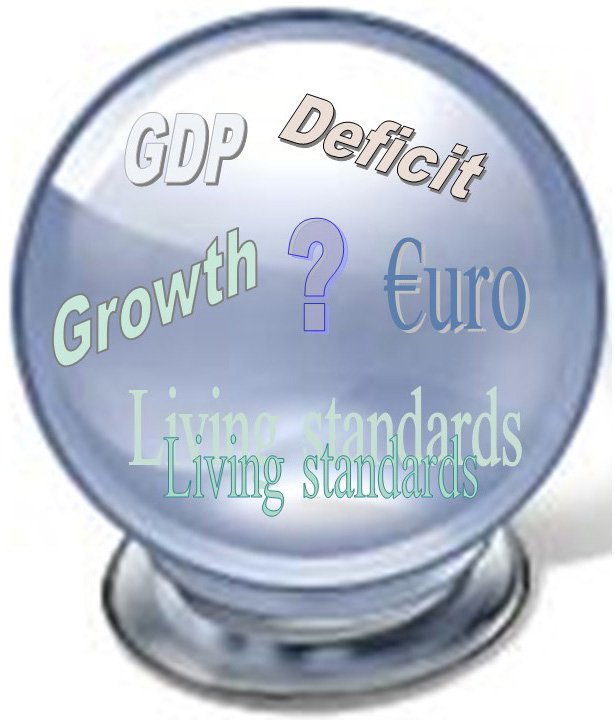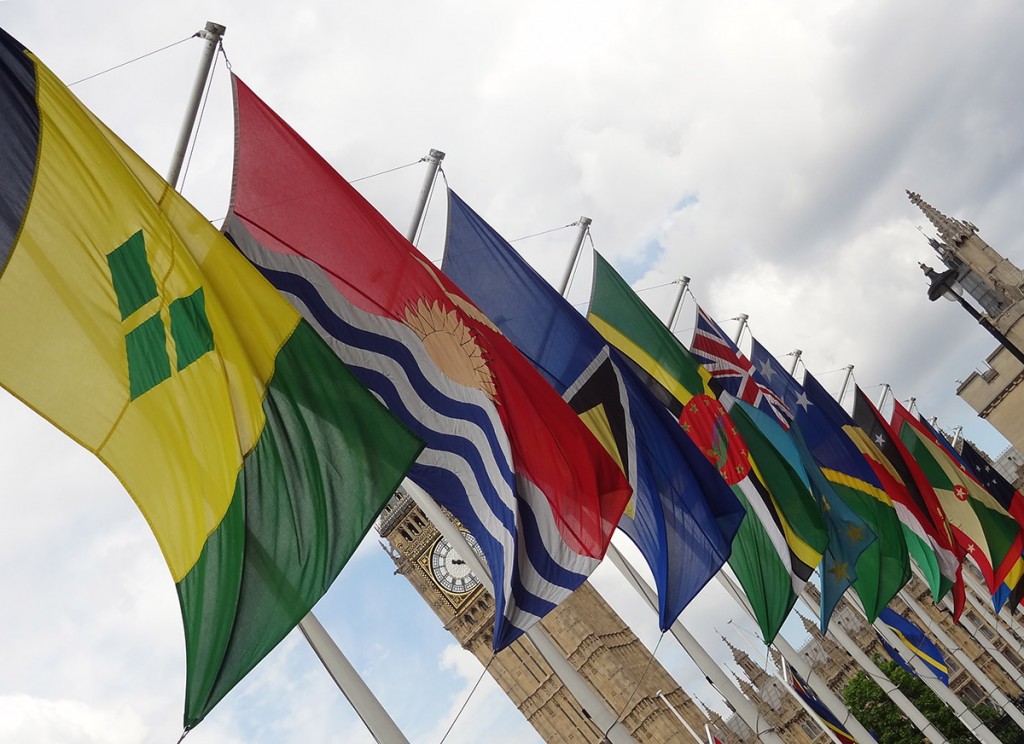 With worries about Greek exit from the eurozone, with the unlikelihood of further quantitative easing in the USA and the UK, with interest rates likely to rise in the medium term, and with Chinese growth predicted to be more moderate, many market analysts are forecasting that stock markets are likely to fall in the near future. Indeed, markets are already down over the past few weeks. Since late April/early May, the FTSE is down 4.5%; the German DAX index is down 7.0%; the French CAC40 index is down 6.9%; and the US Dow Jones index is down 2.3%. But does this give us an indication of what is likely to happen over the coming months?
With worries about Greek exit from the eurozone, with the unlikelihood of further quantitative easing in the USA and the UK, with interest rates likely to rise in the medium term, and with Chinese growth predicted to be more moderate, many market analysts are forecasting that stock markets are likely to fall in the near future. Indeed, markets are already down over the past few weeks. Since late April/early May, the FTSE is down 4.5%; the German DAX index is down 7.0%; the French CAC40 index is down 6.9%; and the US Dow Jones index is down 2.3%. But does this give us an indication of what is likely to happen over the coming months?
If stock markets were perfectly efficient, then all possible information about the future will already have been taken into account and will all be reflected in current share prices. It would be impossible to ‘get ahead of the game’.
It is only if market participants have imperfect information and if you have better information than other people that you can are likely to predict correctly what will happen. Even then, the markets might be buffeted by random and hence unpredictable shocks.
 Some people correctly predicted things in the past: such as crashes or booms. But in many cases, this was luck and their subsequent predictions have proved to be wrong. When financial advisers or newspaper columnists give advice, they are often wrong. If they were reliably right, then people would follow their advice and markets would rapidly adjust to their predictions.
Some people correctly predicted things in the past: such as crashes or booms. But in many cases, this was luck and their subsequent predictions have proved to be wrong. When financial advisers or newspaper columnists give advice, they are often wrong. If they were reliably right, then people would follow their advice and markets would rapidly adjust to their predictions.
If Greece were definitely to exit the euro, if interest rates were definitely to rise in the near future, if it became generally believed that stock markets were overvalued, then stock markets would probably fall. But these things may not happen. After all, people have been predicting a rise in interest rates from their ultra-low levels for many months – and it hasn’t happened yet, and may not happen for some time to come – but it may!
If you want to buy shares, you might just as well buy them at random – or randomly sell any you already have. As Tetlock says, quoted in the Nasdaq article:
“Even the most astute observers will fail to outperform random prediction generators – the functional equivalent of dart-throwing chimps.”
And yet, people do believe that they can predict what is going to happen to stock markets – if not precisely, then at least roughly. Are they deluded, or can looking calmly at likely political and economic events put them one step ahead of other people who perhaps behave more reactively and emotionally?
Bond rout spells disaster for stock markets as global credit kraken awakens The Telegraph, John Ficenec (14/6/15)
Comment: Many imponderables for markets The Scotsman, Bill Jamieson (14/6/15)
How Ignoring Stock Market Forecasts Will make you a better investor Forbes, Ky Trang Ho (6/6/15)
The Predictions Racket Nasdaq, AdviceIQ, Jason Lina (21/5/15)
Questions
- Why may a return of rising interest rates lead to a ‘meltdown in equity prices’? Why might it not?
- Why have bond yields fallen dramatically since 2008?
- Why are bond yields rising again now and what significance might this have (or have had) for equity markets?
- Why may following the crowd often lead to buying high and selling low?
- Is there an asymmetry between buying and selling behaviour in stock markets?
- Will ignoring stock market forecasts make people better investors?
- “The stock market prices suggest that investors believe both the Federal Reserve and the Bank of England are bluffing about raising interest rates. That may be so, but it is an extremely risky game of chicken for investors to play.” Explain and discuss.
 With talks ongoing about resolving the Greek debt crisis, it is clear that there is no agreement that will satisfy both sides – the Greek government and the troika of lenders (the IMF, the ECB and the European Commission). Their current negotiating positions are irreconcilable. What is needed is something more fundamental to provide a long-term solution. What is needed is a ‘deus ex machina‘.
With talks ongoing about resolving the Greek debt crisis, it is clear that there is no agreement that will satisfy both sides – the Greek government and the troika of lenders (the IMF, the ECB and the European Commission). Their current negotiating positions are irreconcilable. What is needed is something more fundamental to provide a long-term solution. What is needed is a ‘deus ex machina‘.
A deus ex machina, which is Latin for ‘god from a machine’, was a device used in Greek tragedy to solve an impossible situation. A god would appear from above, lowered by a crane, or from below through a trap door, and would put everything right. The tragedy would then be given a happy ending.
So what possible happy ending could be brought to the current Greek tragedy and who could be the deus ex machina?
 The negotiations between Greece and the troika currently centre on extending credit by €7.2bn when existing debts come up for repayment. There are repayments currently due to the IMF, or by the end of June, of €1.5bn and more in July, September and December (another €3.2bn). There are also €6.7bn of Greek bonds held by the ECB, as part of the 2010 bailout programme, that are due for repayment in July and August. Without the €7.2 billion bailout, Greece will be unable to meet these debt repayments, which also include Treasury bills.
The negotiations between Greece and the troika currently centre on extending credit by €7.2bn when existing debts come up for repayment. There are repayments currently due to the IMF, or by the end of June, of €1.5bn and more in July, September and December (another €3.2bn). There are also €6.7bn of Greek bonds held by the ECB, as part of the 2010 bailout programme, that are due for repayment in July and August. Without the €7.2 billion bailout, Greece will be unable to meet these debt repayments, which also include Treasury bills.
But the troika will only release the funds in return for harsh austerity measures, which involve further cuts to pensions and public expenditure. Greece would be required to run a substantial budget surplus for many years.
Greece could refuse, but then it would end up defaulting on debt and be forced out of the euro. The result would probably be a substantial depreciation of a newly restored drachma, rising inflation and many Greeks suffering even greater hardship – at least for a period of time.
 So what is the possible deus ex machina? If you’re looking for a ‘god’ then it is best, perhaps, to look beyond the current actors. Perhaps the Americans could play the role in finding a solution to the impasse. Perhaps a small group of independent experts or politicians, or both, could find one. In either case, the politics of the situation would have to be addressed as well as the economics and finance.
So what is the possible deus ex machina? If you’re looking for a ‘god’ then it is best, perhaps, to look beyond the current actors. Perhaps the Americans could play the role in finding a solution to the impasse. Perhaps a small group of independent experts or politicians, or both, could find one. In either case, the politics of the situation would have to be addressed as well as the economics and finance.
And what would be the ‘fix’ to satisfy both sides? Ultimately, this has to allow Greek debt to be sustainable without further depressing demand and undermining the fabric of Greek society.  This would almost certainly have to involve a large measure of debt forgiveness (i.e. debts being written off). It also has to avoid creating a moral hazard, whereby if the Greeks are seen as being ‘let off lightly’, this might encourage other indebted eurozone countries to be less willing to reduce their debts and make demands for forgiveness too.
This would almost certainly have to involve a large measure of debt forgiveness (i.e. debts being written off). It also has to avoid creating a moral hazard, whereby if the Greeks are seen as being ‘let off lightly’, this might encourage other indebted eurozone countries to be less willing to reduce their debts and make demands for forgiveness too.
Ultimately, the issue is a political one, not an economic one. This will require clever negotiation and, if there is a deus ex machina, clever mediation too.
Videos
 Greek PM Tsipras warns lenders bailout plans ‘not realistic’ BBC News, Jim Reynolds (5/6/25)
Greek PM Tsipras warns lenders bailout plans ‘not realistic’ BBC News, Jim Reynolds (5/6/25)
 Greece defers IMF payment until end of June BBC News, Chris Morris (5/6/15)
Greece defers IMF payment until end of June BBC News, Chris Morris (5/6/15)
 Greek debt talks: Empty shops and divided societies BBC News, Chris Morris (10/6/15)
Greek debt talks: Empty shops and divided societies BBC News, Chris Morris (10/6/15)
 Potential Grexit effects Deutsche Welle (13/6/15)
Potential Grexit effects Deutsche Welle (13/6/15)
Articles
It’s time to end the pretence: Greece will never fully repay its bailout loan The Guardian, Andrew Farlow (9/6/15)
Greek exit would trigger eurozone collapse, says Alexis Tsipras The Guardian, Phillip Inman, Helena Smith and Graeme Wearden (9/6/15)
The eurozone was a dream of unity. Now Europe has turned upon itself The Guardian, Business leader (14/6/15)
Greece bailout talks: an intractable crisis with three possible outcomes The Guardian, Larry Elliott (2/6/15)
Greece needs an economic defibrillator and a debt write-off Financial Times letters, Ray Kinsella (25/3/15)
Greece’s new debt restructuring plan Times of Change, Peter Spiegel (5/6/15)
Eurozone still in denial about Greece BBC News, Robert Peston (3/6/15)
Greece bailout talks – the main actors in a modern-day epic The Guardian, Phillip Inman, Ian Traynor and Helena Smith (9/6/15)
Greece isn’t any old troubled debtor BBC News, Robert Peston (15/6/15)
Greece in default if debt deadline missed, says Lagarde BBC News (18/6/15)
Burden of debt to IMF and European neighbours proves too much for Greece The Guardian, Heather Stewart (17/6/15)
Paper
Ending the Greek Crisis: Debt Management and Investment led Growth Greek government
Questions
- To which organisations is Greece indebted? What form to the debts take?
- To what extent is Greece’s current debt burden the result of design faults of the euro?
- Would it be possible to restructure debts in ways that make it easier for Greece to service them?
- Should Greece be treated by the IMF the same way it treated the highly indebted poor countries (HIPCs) and granted substantial debt relief?
- What would be the effects of Greek exit from the euro (a) for Greece; (b) for other eurozone countries?
- What bargaining chips can Greece deploy in the negotiations?
- Explain what is meant by ‘moral hazard’. Where in possible outcomes to the negotiations may there be moral hazard?
- What has been the impact of Greek austerity measures on the distribution of income and wealth in Greece?
- What are the practicalities of pursuing supply-side policies in Greece without further dampening aggregate demand?
 The period from the end of the Second World War until the financial crisis of 2007–8 was one of increasing globalisation. World trade rose considerably faster than world GDP. The average annual growth in world GDP from 1950 to 2007 was 4.2%; the average annual growth in world merchandise exports was 6.7%.
The period from the end of the Second World War until the financial crisis of 2007–8 was one of increasing globalisation. World trade rose considerably faster than world GDP. The average annual growth in world GDP from 1950 to 2007 was 4.2%; the average annual growth in world merchandise exports was 6.7%.
And there were other ways in which the world was becoming increasingly interconnected. Cross-border financial flows grew strongly, especially in the 1990s and up to 2007. In the early 1990s, global cross-border capital flows were around 4% of world annual GDP; by 2007, they had risen to over 20%. The increasing spread of multinational corporations, improvements in transport, greater international movement of labour and improved communications were all factors that contributed to a deepening of globalisation.
 But have things begun to change? Have we entered into an era of ‘deglobalisation’? Certainly some indicators would suggest this. In the three years 2012–14, world exports grew more slowly than world GDP. Global cross-border financial flows remain at about one-third of their 2007 peak. Increased banking regulations are making it harder for financial institutions to engage in international speculative activities.
But have things begun to change? Have we entered into an era of ‘deglobalisation’? Certainly some indicators would suggest this. In the three years 2012–14, world exports grew more slowly than world GDP. Global cross-border financial flows remain at about one-third of their 2007 peak. Increased banking regulations are making it harder for financial institutions to engage in international speculative activities.
What is more, with political turmoil in many countries, multinational corporations are more cautious about investing in such markets. Many countries are seeking to contain immigration. Fears of global instability are encouraging many firms to look inwards. After more than 13 years, settlement of the Doha round of international trade negotiations still seems a long way off. Protectionist measures abound, often amount to giving favourable treatment to domestic firms.
 The Observer article considers whether the process of increased globalisation is now dead. Or will better banking regulations ultimately encourage capital flows to grow again; and will the inexorable march of technological progress give international trade and investment a renewed boost? Will lower energy and commodity prices help to reboot the global economy? Will the ‘Great Recession’ have resulted in what turns out to be merely a blip in the continued integration of the global economy? Is it, as the Huffington Post article states, that ‘globalization has a gravitational pull that is hard to resist’? See what the articles and speech have to say and what they conclude.
The Observer article considers whether the process of increased globalisation is now dead. Or will better banking regulations ultimately encourage capital flows to grow again; and will the inexorable march of technological progress give international trade and investment a renewed boost? Will lower energy and commodity prices help to reboot the global economy? Will the ‘Great Recession’ have resulted in what turns out to be merely a blip in the continued integration of the global economy? Is it, as the Huffington Post article states, that ‘globalization has a gravitational pull that is hard to resist’? See what the articles and speech have to say and what they conclude.
Articles
Borders are closing and banks are in retreat. Is globalisation dead? The Observer, Heather Stewart (23/5/15)
Is Globalization Finally Dead? Huffington Post, Peter Hall (6/5/14)
Speech
Financial “deglobalization”?: capital flows, banks, and the Beatles Bank of England, Kristin Forbes (18/11/14)
Questions
- Define globalisation.
- How does globalisation affect the distribution of income (a) between countries; (b) within countries?
- Why has the Doha round of trade negotiations stalled?
- Examine the factors that might be leading to deglobalisation.
- What are the implications of banking deglobalisation for the UK?
- Are protectionist measures always undesirable in terms of increasing global GDP?
- What forces of globalisation are hard to resist?
 Interest rates are the main tool of monetary policy and crucially affect investment. There has been much discussion since the end of the financial crisis concerning when UK interest rates would eventually rise. Uncertainty over just when, and by how much, interest rates will rise affects business confidence and hence investment. Businesses therefore listen carefully to what the Bank of England says about future movements in Bank Rate. But Mark Carney has now spoken about another cause of uncertainty and its impct on investment. This is the uncertainty over the outcome of the referendum on whether the UK should leave the EU.
Interest rates are the main tool of monetary policy and crucially affect investment. There has been much discussion since the end of the financial crisis concerning when UK interest rates would eventually rise. Uncertainty over just when, and by how much, interest rates will rise affects business confidence and hence investment. Businesses therefore listen carefully to what the Bank of England says about future movements in Bank Rate. But Mark Carney has now spoken about another cause of uncertainty and its impct on investment. This is the uncertainty over the outcome of the referendum on whether the UK should leave the EU.
By 2017, the Prime Minister has promised a referendum on staying in the EU, but Mark Carney has urged for this to be held ‘as soon as possible’. Whether or not the UK remains in the EU will have a big effect on businesses and with the uncertainty surrounding the UK’s future, this may soon turn to a lack of investment.  As yet, businesses have not responded to this uncertainty, but the longer the delay for the referendum, the more inclined firms will be to postpone investment. As Mark Carney said:
As yet, businesses have not responded to this uncertainty, but the longer the delay for the referendum, the more inclined firms will be to postpone investment. As Mark Carney said:
“We talk to a lot of bosses and there has been an awareness of some of this political uncertainty – whether because of the election or because of the referendum … What they’ve been telling us, and we see it in the statistics, is they have not yet acted on that uncertainty – or to put it another way, they are continuing to invest, they are continuing to hire.”
Leaving the EU will have big effects on consumers and businesses, given that the EU is the UK’s largest market, trading partner and investor. With a referendum sooner rather than later, uncertainty will be more limited and any reaction by businesses will take place over a shorter time period. There are many other factors that affect business investment, some of which are related to the UK’s relationship with the EU and the following articles consider these issues.
EU referendum should be held ‘as soon as necessary’, says Mark Carney BBC News (14/5/15)
Business want an early EU referendum, Mark Carney indicates The Telegraph, Ben Riley-Smith (14/5/15)
EU poll should take place ‘as soon as necessary’, says Bank of England Chief The Guardian, Angela Monaghan (14/5/15)
Threat of business leaving the EU is fuelling business ‘uncertainty’, says Bank of England governor Mark Carney Mail Online, Matt Chorley (14/5/15)
Bank of England’s Mark Carney urges speedy EU referendum Financial Times, George Parker (14/5/15)
Questions
- Why is the EU important to the UK’s economic performance?
- If the UK were to leave the EU, what impact would this have on UK consumers?
- What would be the impact on UK firms if the UK were to leave the EU?
- Consider an AD/AS diagram and use this to explain the potential impact on the macroeconomic variables if the UK were to leave the EU.
- Why is uncertainty over the UK’s referendum likely to have an adverse effect on investment?
 A new group of economies, known as MINT, are seen as strong current and future emerging markets. We’ve had the BRICS (Brazil, Russia, India, China and South Africa) and now we have the MINTs (Mexico, Indonesia, Nigeria and Turkey).
A new group of economies, known as MINT, are seen as strong current and future emerging markets. We’ve had the BRICS (Brazil, Russia, India, China and South Africa) and now we have the MINTs (Mexico, Indonesia, Nigeria and Turkey).
In 2014, Nigeria became Africa’s fastest growing nation. A large part of Nigeria’s success has to do with growth in some of its key industries.
Nigerian’s reliance on the oil and gas industry created an attractive economy for further development and it now has high growth in a diverse range of sectors, including mobile phones, champagne, private jets and ‘Nollywood’. Despite the uncertainty and political unrest caused by Boko Haram, Nigeria is attracting a significant amount of Foreign Direct Investment (FDI) in a range of sectors, indicating its growing diversity and attractiveness to some of the world’s largest multinational companies.
Boko Haram has certainly had a dampening effect on Nigeria’s growth, as has the lower oil price, but this may create opportunities for further diversification. Furthermore there are concerns about how the wealth of the nation is concentrated, given that poverty is still prevalent across the country. However, Nigeria is certainly emerging as a success story of Africa and surely the question that will be asked is will other African nations follow suit?
The following article from BBC News considers the Nigerian economy.
Nigeria’s ‘champagne’ economy bucks Boko Haram effect BBC News, Vishala Sri-Pathma (27/3/15)
Questions
- Is a falling oil price necessarily bad for the Nigerian economy?
- Explain why Boko Haram is likely to have a dampening effect on economic growth in Nigeria.
- Do you think other African nations will be able to replicate the success of Nigeria? Which factors may prevent this?
- If the number of millionaires is increasing significantly, but poverty is persisting, does this tell us anything about what is happening to inequality in Nigeria?
- Is is possible to reduce inequality in Nigeria while maintaining economic growth? Might it even be posible for greater equality to be a driver of economic growth?
- The Nigerian currency is weakening. What has caused this and why may this be a cause for concern?
 With worries about Greek exit from the eurozone, with the unlikelihood of further quantitative easing in the USA and the UK, with interest rates likely to rise in the medium term, and with Chinese growth predicted to be more moderate, many market analysts are forecasting that stock markets are likely to fall in the near future. Indeed, markets are already down over the past few weeks. Since late April/early May, the FTSE is down 4.5%; the German DAX index is down 7.0%; the French CAC40 index is down 6.9%; and the US Dow Jones index is down 2.3%. But does this give us an indication of what is likely to happen over the coming months?
With worries about Greek exit from the eurozone, with the unlikelihood of further quantitative easing in the USA and the UK, with interest rates likely to rise in the medium term, and with Chinese growth predicted to be more moderate, many market analysts are forecasting that stock markets are likely to fall in the near future. Indeed, markets are already down over the past few weeks. Since late April/early May, the FTSE is down 4.5%; the German DAX index is down 7.0%; the French CAC40 index is down 6.9%; and the US Dow Jones index is down 2.3%. But does this give us an indication of what is likely to happen over the coming months? Some people correctly predicted things in the past: such as crashes or booms. But in many cases, this was luck and their subsequent predictions have proved to be wrong. When financial advisers or newspaper columnists give advice, they are often wrong. If they were reliably right, then people would follow their advice and markets would rapidly adjust to their predictions.
Some people correctly predicted things in the past: such as crashes or booms. But in many cases, this was luck and their subsequent predictions have proved to be wrong. When financial advisers or newspaper columnists give advice, they are often wrong. If they were reliably right, then people would follow their advice and markets would rapidly adjust to their predictions.









